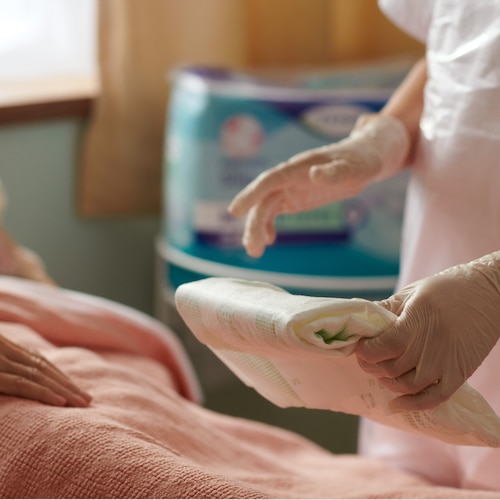Providing users with TENA Flex and TENA Pants demonstrates significant benefits compared with all-in-one or two-piece products. [2]
Up to 13 weeks of caregiver time saved annually4
Carers save a significant amount of valuable time during product changes by using highly usable products. This not only improves care efficiency, but carers can also refocus their time to meet their patients' and residents' individual needs.
Up to 9 weeks of back bends saved annually4
Highly usable products reduce physical strain on caregivers during product changes. This in turn can reduce injury, reduce sick leave, and reduce temporary staff costs.
Happier, healthier, more satisfied staff
Highly usable products are likely to improve carers' job satisfaction and working environment.






















